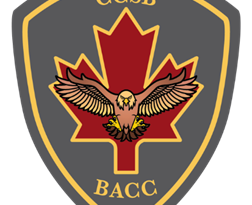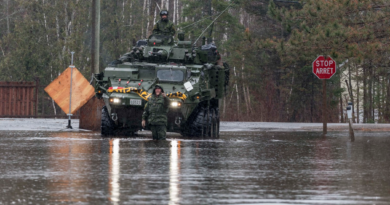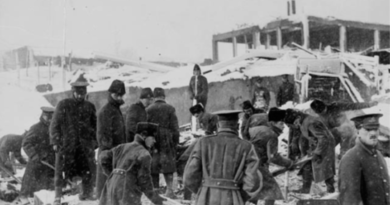A Ground Force Option for an Arctic Policy
by John McLearn
It is clear that with climate change our Arctic is now vulnerable to unscrupulous regimes. Arctic ice is disappearing and there is every indication that the North West Passage will become increasingly viable as are the possibilities of exploration of the seabed by commercial companies and by foreign powers.
In recent times, Chinese icebreakers have been exploring the edges of the Arctic including Canadian sovereign territory. Canada has a very limited capacity to verify their operations. Canada has often used Russian icebreakers for scientific exploration and hydrographic surveys of Canadian Arctic waters. It is safe to assume there is the possibility that adversarial countries may have more knowledge of Canadian Arctic waters than Canada.
The idea that the Arctic is a barrier is no longer true. Canada must develop the capacity to ‘police’ the area but also defend it if necessary. The primary goal of any defence is the ability to deter any possible foe either by ourselves or potentially with allies. If deterrence fails and if necessary, defence must use lethal force.
One important point is that any development must have the full support of the inhabitants of the territories. Development of multipurpose infrastructure is absolutely necessary for any defence to work.
Defence of the Arctic Requires Infrastructure
Any defence of the Arctic requires that infrastructure must be multi-purpose, preferably with a deep-water port, a modern airport, warehousing, an all-weather land method of transport whether road, rail or preferably both, and a suitable population to support and maintain the facilities. Any new port should have the full range of features to support the population including water, sewage, power, schools, hospital, religious institutions, recreational facilities and government offices. Preferably there would be more than one port, with locations possibly including Gray’s Bay, Cambridge Bay, Inuvik, Iqaluit and Churchill. Canadian Forces Station Alert and the seasonal naval refueling facility at Nanisivik should be retained.
Logistics
The primary difficulty for any defence of the Arctic is logistics. Any infrastructure created must be joint including Navy, Army and Air Force components. It must be re-suppliable by sea as well as by air. Its airport should be capable of landing large, loaded transport aircraft, thus the runway should be at least 2.5 kilometres long to be a strategic airport.
Warehousing, aircraft maintenance hangers, hardened fighter readiness sites at least sufficient to meet basic air force requirements, storage for multiple fuel types, large scale troop barracks and ammunition bunkers will also be required. The Arctic is too brutal for facilities designed for southern climates.
Another factor is the need to move relatively large quantities of equipment to any point. Consideration should be given to establishing and maintaining forward operating bases but should also be to acquiring the ability to move equipment by sea, preferably by government controlled shipping.
The role of the Canadian Coast Guard might have to be adjusted to support military operations. For example, a Polar Class 2 icebreaker might be required to break the path forward for an ice-hardened supply and transport vessel. These supply vessels would be government owned or on long term contract with a Canadian shipping firm. They would have to have some capacity to land on unprepared beaches. Make no mistake, these are not landing ships, they are ships that can land equipment on unprepared beaches throughout the Arctic.
As per normal, professionals look at logistics, amateurs look at tactics.
An Army Component
I will trust my air and naval colleagues to discuss the air and naval requirements.
So why a ground force component? Ground forces can fill a multitude of tasks other than war fighting. The most prominent example was the use of parachute forces from the Canadian Airborne Training Centre based at Canadian Forces Base Edmonton to search for Cosmos 954 in January 1978, when that Soviet nuclear-powered satellite crashed in Canada’s Arctic. More recently, the Chinese balloon issue would have required a ground component to cordon and search a specific area for any landed debris. Air crashes have also occurred and specialized ground forces could be used for the wider rescue effort. These are just a few examples of tasks other than war where ground forces provide other capabilities on short notice.
The Arctic is unforgiving. Units based in the south need to train constantly at all times of year to maintain readiness and to be familiar with the Arctic region and its people. An Arctic Warfare School is therefore necessary in the north. The Canadian Rangers provide survival expertise that not available any other way. They also provide the ability to observe and conduct reconnaissance within reasonable parameters. They are not combatants. The territorial council has suggested that a regiment be raised within Nunavut. This would become a Regular Force unit solely based in the Arctic and give opportunity to young citizens of the territory to join the reserve or regular components of the Canadian Armed Forces. These would be the only permanently based ground force organizations in the north. The remainder would be southern based units.
What sort of troops should be considered for Arctic operations?
1. An air transportable, high readiness organization of sufficient size capable of deploying either small groups or organizations up to battle group size on short notice (24 hours). This force is the immediate action force for both domestic humanitarian operations to sovereignty enforcement operations including combat operations. This would be a Regular Force organization with minor Reserve augmentation.
2. A second contingent based on a more heavily equipped organization with specialized vehicles, weapons and equipment as follow on forces capable of being delivered by air or sea. Initial movement would be within three days of the order to deploy. This would be a Regular Force organization with Reserve augmentation.
3. Follow on forces from the Reserve, perhaps utilizing the Arctic Response Companies currently in existence in each Canadian Army division. These are members of the Primary Reserve. This could be ramped up to a small battle group size if required. Sufficient time would be required to bring these organizations up to a standard to be determined. This would allow for rotation and a supply of troops familiar with Arctic operations for the purpose of rotating forces in the north.
4. A logistics and maintenance capability permanently based in the north to support up to a small brigade if necessary.
International Obligations and Ideas
The Allied Command Europe (ACE) Mobile Land Force was formed in 1960 and lasted as a NATO organization until 2002. It was widely supported by a large number of NATO member countries that varied over time. Canada contributed a mechanized battle group to the ACE Mobile Force Land. The model is worth looking at to establish a NATO organization that would function on short notice to the Canadian Arctic. It would have to consider existing agreements with the US in regard to continental defence. Given the current extreme comments of the current US administration, a European back up is necessary.
In less chaotic times, further development of Canadian and US ground force organization might be considered.
Another Comment
During recent RUSI(NS) deliberations, the subject of the Canadian Airborne Regiment’s re-creation was discussed. This is a politically loaded name. If I could suggest a return to the origins of Canadian airborne forces, the 1st Canadian Parachute Battalion. It was formed in 1942 and as part of 6 UK Airborne Division participated in the D-Day airborne attack the night before the actual seaborne landing. It had an excellent combat record and was instrumental in stopping Russian forces from potentially occupying Denmark. Therefore, perhaps we should name the organization the Canadian Parachute Regiment and create one or two Regular Force battalions with a Reserve component? It would also require other arms to contribute organizations of suitable size to create parachute battle groups, as well as logistics and medical organizations.
John McLearn is a retired Intelligence Officer of the Canadian Armed Forces, and has Infantry experience.




